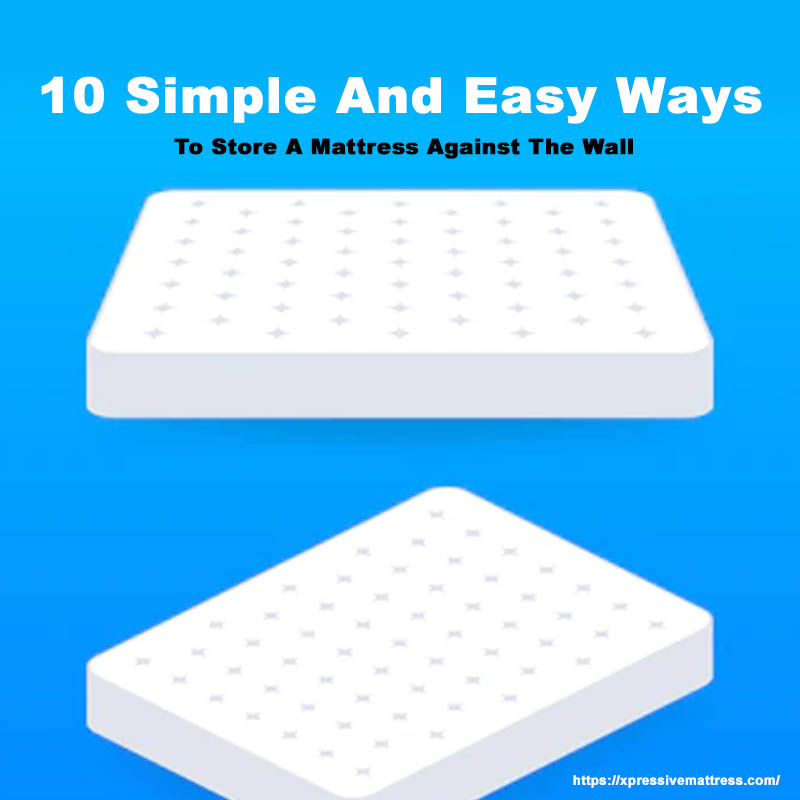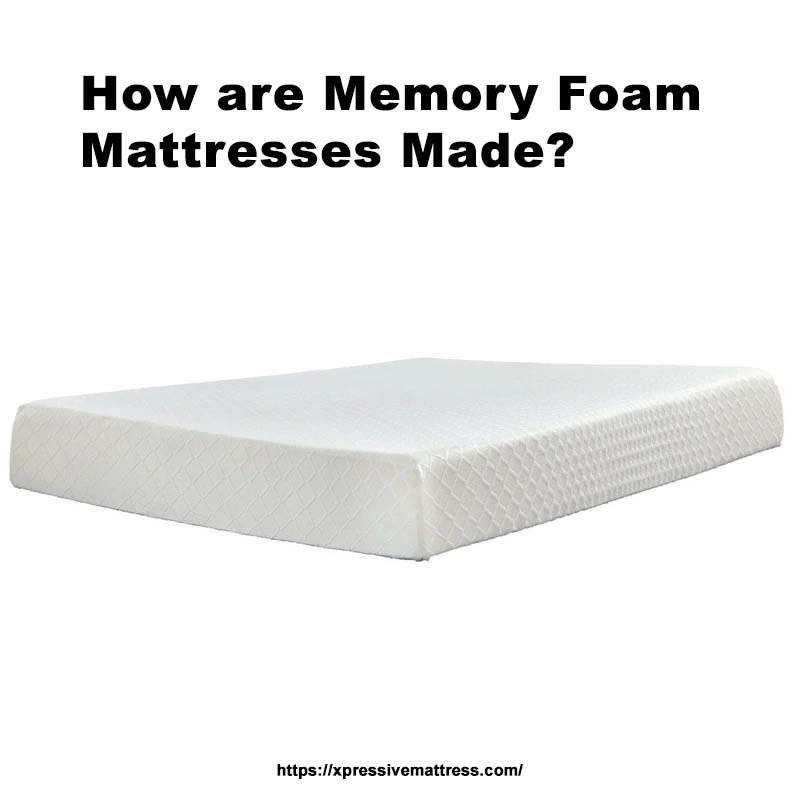Mold on memory foam mattresses can be a real problem.
It’s important to take steps to prevent it from occurring in the first place, and there are several ways you can do this:
- Keep your mattress clean.
- Use an anti-mold spray or powder regularly.
- Make sure that any spills are cleaned up quickly and thoroughly.
- Ensure adequate ventilation around the bed area by opening windows when possible.
In addition, I recommend using a waterproof cover for extra protection against mold growth.
These simple tips will help keep your memory foam mattress free of mold!
What Causes Mold On Memory Foam Mattresses?
Mold on memory foam mattresses is a common problem.
It can be caused by several factors, including:
- Humidity.
- Lack of ventilation.
- And poor cleaning habits.
Humidity
Memory foam mattresses are highly absorbent and easily soak up moisture from the air if it’s too humid in your bedroom or another sleeping area.
This creates an ideal environment for mold to grow quickly!
Lack of Ventilation
If you don’t allow enough airflow around your mattress (by not opening windows regularly).
This could also lead to increased humidity levels, which encourages mold growth.
Poor Cleaning Habits
Not washing bedding frequently, using harsh chemicals when cleaning surfaces near the mattress, or failing to vacuum underneath/around the edges can create conditions that favor mold development over time.
Important Facts about Mold on Memory Foam Mattress include:
- Mold spores thrive in warm temperatures with high levels of moisture. Both things are found inside most bedrooms during the summer months.
- Regularly airing out rooms helps reduce indoor humidity.
- Washing sheets at least once per week keeps dust mites away and reduces potential sources for mold formation.
- Vacuuming under beds removes any dirt particles that may encourage fungal growth.
How To Properly Store Memory Foam Mattress When Not In Use?
Storing a memory foam mattress when not in use is important for its longevity. Here are some tips to help you properly store your mattress:
- Please ensure the area where it will be stored is clean and dry, free from dust or moisture.
- Place the mattress on an even surface, such as plywood boards or slats, so air can circulate around it.
- Cover with plastic sheeting to protect against dirt, insects, and other pests.
- If possible, place it inside a sealed container like a cardboard box lined with plastic wrap (this helps keep out humidity).
- Avoid storing near heat sources such as radiators or vents which could damage the material over time.
- Keep away from direct sunlight since this may cause discoloration of fabric covers.
- Flip periodically if using two-sided mattresses – flipping every few months ensures both sides wear evenly over time.
- Vacuum regularly while in storage – this removes any debris that might have accumulated during the transport/storage period.
- Finally, occasionally check up on your memory foam to ensure everything looks good!
Following these steps should ensure proper care for your valuable investment!
Importance Of Proper Ventilation For Memory Foam Mattresses
Proper ventilation is essential for memory foam mattresses.
It helps to keep the mattress in good condition and ensures that it lasts longer.
Here are some of the benefits:
Improved air circulation
Proper ventilation allows fresh air to circulate around your mattress, which can help reduce odors caused by sweat or other liquids seeping into the material over time.
This also prevents mold from forming on its surface due to moisture buildup inside the bedding materials.
Reduced heat retention
Memory foam retains body heat more than traditional spring beds, so proper airflow will ensure a cooler sleeping environment.
Increased comfort
With better breathability comes improved support and cushioning and reduced pressure points when lying on top of it.
Extended lifespan
By allowing adequate amounts of oxygen to flow through your mattress, you’ll be able to extend its life expectancy significantly compared to no ventilated system!
Additionally, this setup may prevent sagging or indentations from occurring prematurely if done correctly.
All these factors combined make proper ventilation an important part of keeping your memory foam mattress healthy and comfortable for years ahead!
Tips For Keeping Memory Foam Mattresses Clean And Dry
Memory foam mattresses are a great way to get a comfortable sleep, but they require special care.
Here are some tips for keeping your memory foam mattress clean and dry:
Vacuum regularly
Use the upholstery attachment on your vacuum cleaner to remove dust particles from the surface of the mattress every few weeks.
This will help keep it looking fresh and new!
Spot-clean spills immediately
If you spill something on your memory foam mattress, use a damp cloth or sponge with mild detergent (like dish soap) to spot-clean as soon as possible before any stains set in permanently.
Avoid moisture buildup
Memory foam is sensitive to moisture, so ensure that there’s no standing water near or around it when cleaning. Also, avoid using steam cleaners which can cause damage over time due to excessive heat exposure!
Rotate and flip periodically.
To ensure even wear throughout its lifespan, rotate and/or flip your memory foam mattress at least once per year.
It.
This helps prevent sagging spots from forming too quickly, depending on how often you use them!
Protect against allergens
Investing in an allergen barrier cover for added protection against dust mites and pet dander.
It is always recommended if allergies run rampant among family members living under one roof.
It’s worth taking extra precautions here, just in case!
With these simple steps taken into consideration, you’ll be able to enjoy many years of restful nights without worrying about dirt buildups ruining your comfort level!
Is Regular Cleaning Of Memory Foam Mattress Necessary?
Regular Cleaning of memory foam mattresses is necessary for several reasons.
- It helps to keep the mattress free from dust mites and other allergens. These can cause health problems such as asthma or eczema.
- Regular Cleaning will help extend the life span of your mattress. It’s done by removing dirt and debris which could otherwise damage its structure over time.
- Keeping your bed clean ensures you get a good night’s sleep. Sleeping on an unclean surface may lead to skin irritation or discomfort due to bacteria buildup in the fabric fibers.
Here are some tips for regularly maintaining your memory foam mattress:
- Vacuum at least once every two weeks using an upholstery attachment. This removes any loose particles like pet hair or lint before they have a chance to settle into fabrics.
- Spot-treat stains with a mild detergent solution immediately after spillage occurs.
- Use baking soda sprinkled onto affected areas, followed by vacuuming off excess powder – this absorbs odors caused by sweat/spills, which leave behind a fresh scent.
- Rotate and flip periodically (every 3 months) so all parts receive equal wear and tear.
- Avoid exposing direct sunlight – UV rays can degrade material quality over time leading to premature breakdowns.
- If possible, invest in a waterproof cover – it prevents liquids from seeping through layers, causing mold growth underneath.
By following these simple steps, you’ll be able to ensure maximum comfort while prolonging the lifespan of one most important pieces of furniture!
How To Clean Memory Foam Mattress To Prevent Mold Growth?
Cleaning a memory foam mattress is important to prevent mold growth.
Here are some tips on how to do it:
- Vacuum the surface of your mattress regularly using an upholstery attachment.
- This will help remove dust and dirt particles that can accumulate over time.
- Spot clean any stains with a mild detergent or baking soda mixed in water, then blot dry with a cloth or paper towel.
- Do not rub, as this may damage the fabric of your mattress!
- Use an enzyme-based cleaner specifically designed for mattresses if stubborn spots won’t come out easily . these cleaners break down organic matter like sweat and body oils. That can cause odors and attract bacteria/mold spores into the material fibers of your bedding.
- Ensure all areas are completely dried after cleaning by leaving windows open during sunny days (if possible).
- Consider investing in waterproof covers for both sides of your memory foam mattress. They provide extra protection against spills and accidents while also helping keep allergens at bay.
What To Do If Mold Does Appear On Memory Foam Mattress?
If mold appears on your memory foam mattress, it’s important to take action quickly. Here are some steps you can take:
- Identify the source of moisture that caused the mold growth.
- This could be a leaky pipe or roof, condensation from air conditioning units,.
- Clean up any standing water and dry out wet areas as soon as possible using fans and dehumidifiers if necessary. Make sure all surfaces are completely dry before proceeding with further cleaning efforts!
- Vacuum around the affected area(s) to remove loose spores/debris – use an attachment specifically designed for mattresses (or one made of soft bristles).
- Mix white vinegar and warm water in a spray bottle, then lightly mist over the surface. Be careful not to saturate fabric fibers. Let sit for 10-15 minutes before wiping away excess liquid with a clean cloth dampened slightly in the same solution used earlier (do NOT rinse!).
- Allow the mattress time to fully air-dry after completing the above step. It may need several hours depending upon humidity levels inside the home environment at a given moment, so plan accordingly!
- Once dried, inspect thoroughly, looking closely for signs of remaining mildew spots. Which should now appear lighter than the original coloration due to their weakened state.
- If still present, repeat the process until satisfied. No more existent within the vicinity anymore!
Conclusion: How To Prevent Mold On Memory Foam Mattress?
It is important to keep the mattress clean and dry to prevent mold on memory foam mattresses.
Regularly vacuum or spot-clean your mattress with a mild detergent solution.
Use an upholstery attachment for best results.
Ensure any spills are cleaned immediately using warm water and soap.
Then dried thoroughly before replacing bedding items such as sheets and blankets.
Additionally, avoid placing damp clothing directly onto the surface of the mattress.
Instead, hang them outside in direct sunlight if possible!
Finally, consider investing in a waterproof cover designed for memory foam mattresses.
Which will help protect against moisture buildup from sweat during sleep cycles while providing additional comfort benefits too!
In conclusion: regular cleaning habits combined with proper ventilation can go a long way toward preventing mold growth on your precious investment.
So don’t forget these simple steps when caring for your new purchase!



